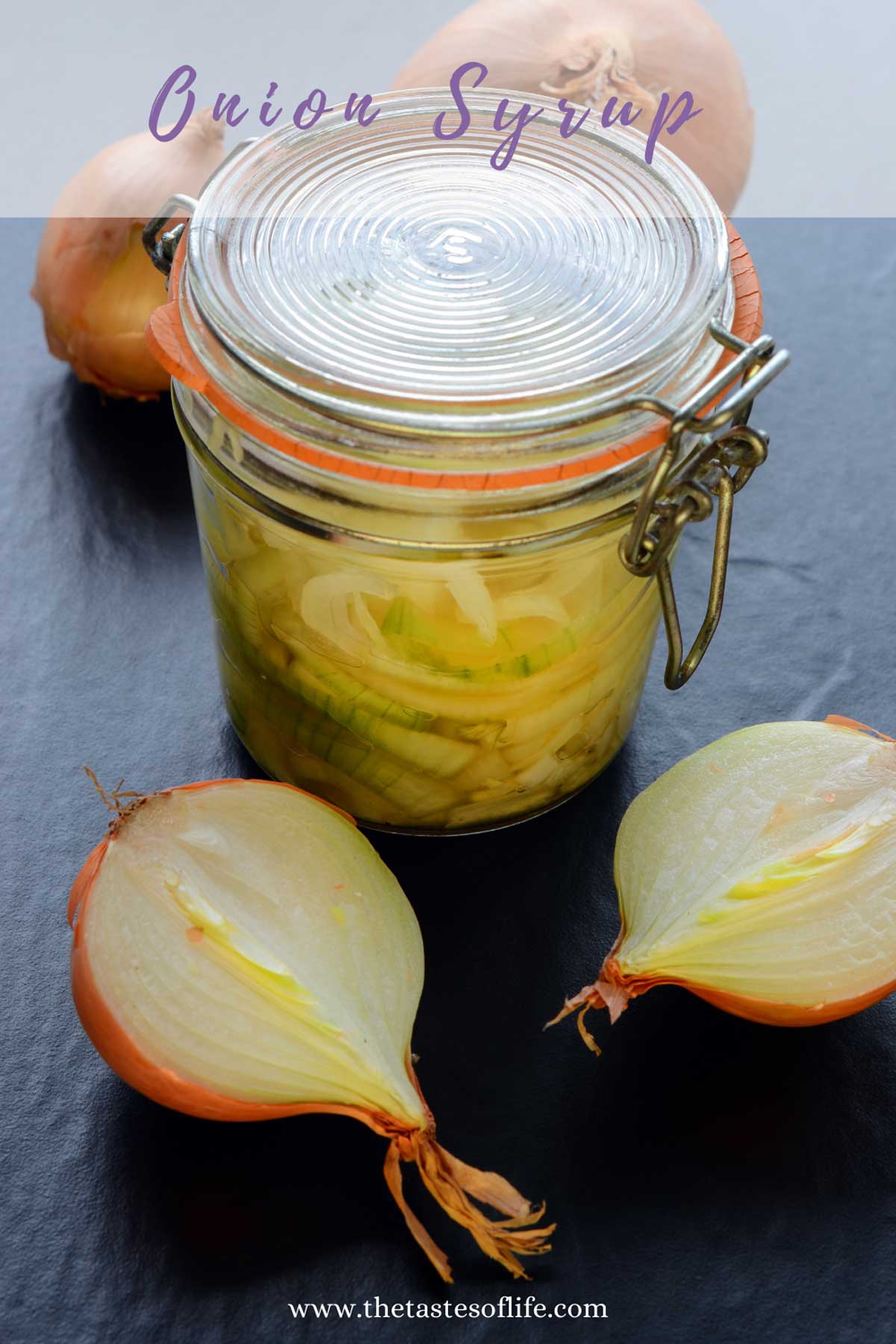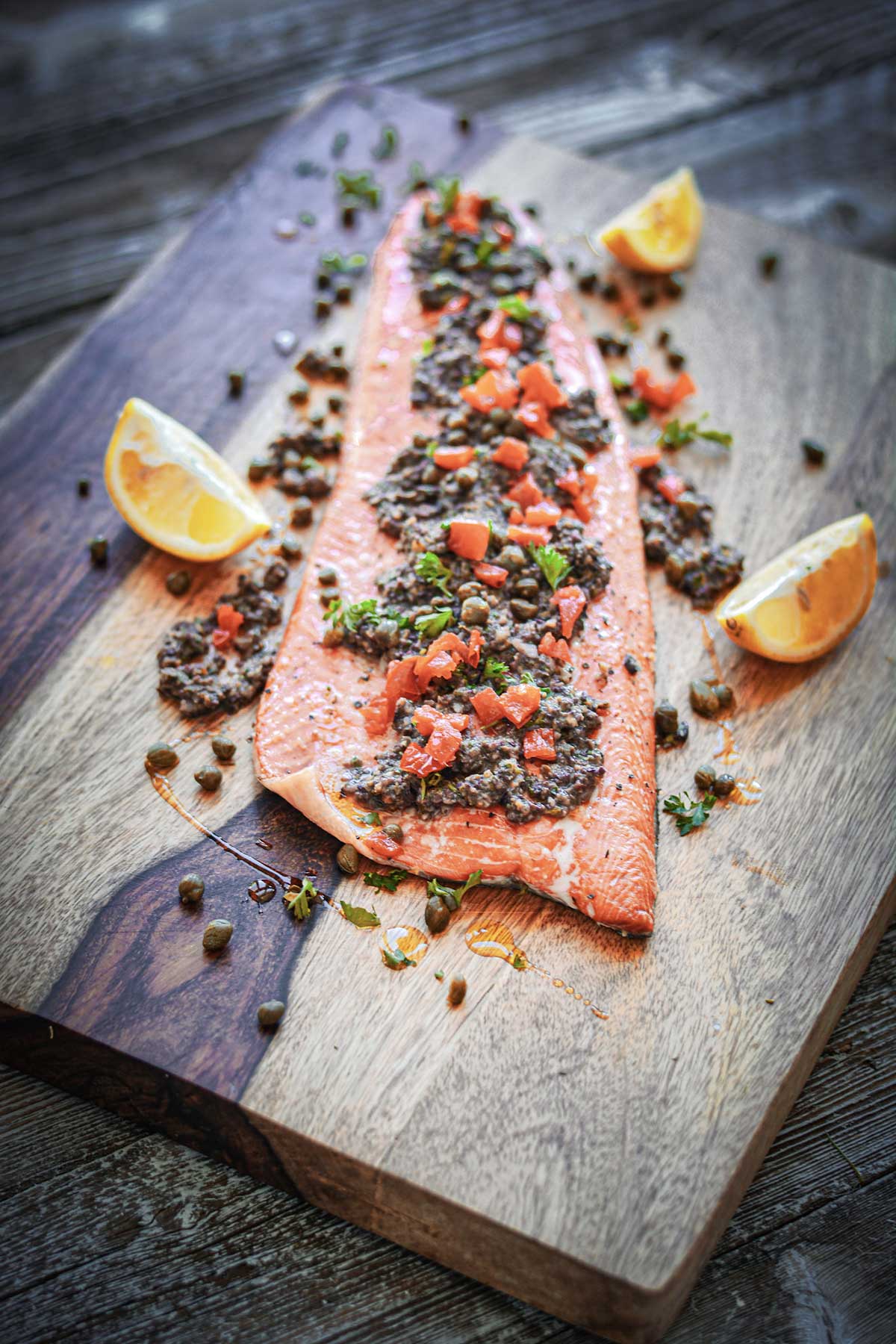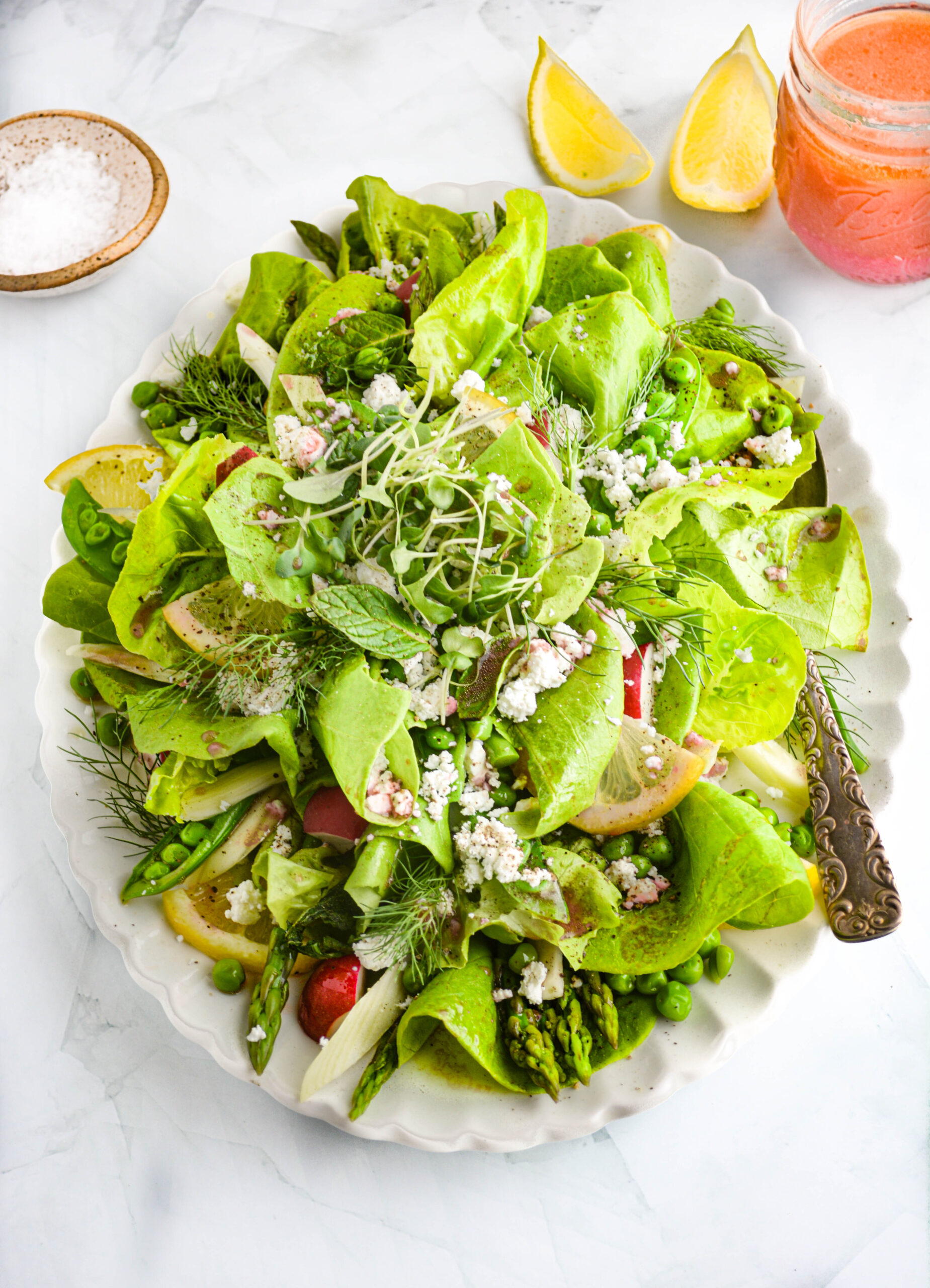Sheet Pan Roasted Vegetables Recipe
Roasted vegetables in a sheet pan are always a hit! From vibrant zucchini to aromatic garlic and bell peppers, learn to create a colorful and flavorful medley of vegetables roasted to perfection. Whether cooking for a weeknight dinner or hosting a gathering, our tips and suggestions will help you create a delicious and satisfying meal that everyone will love.
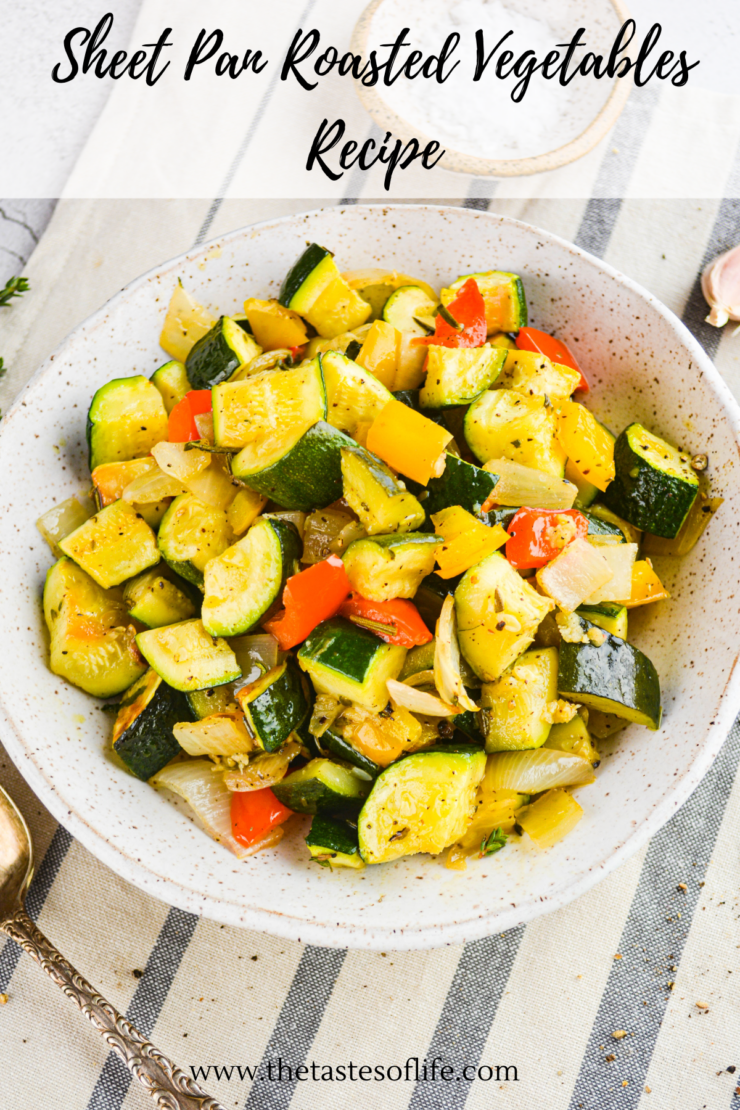
Easy Sheet Pan Roasted Vegetables
These sheet pan roasted vegetables are easy, quick to make, and always taste good, making them appealing to picky eaters – hint (children).
It’s widely acknowledged that incorporating vegetables into our diets is crucial for maintaining good health. However, it can pose quite a challenge if you or your family members aren’t particularly fond of veggies (I understand that only some people are keen on salad recipes).
So, Roasted Vegetables Save the Day!
Yes, you heard that right – I’m absolutely head over heels for these caramelized gems of goodness, and I’m here to tell you why.
First things first, let’s talk about flavor. Oh, the flavor! There’s something truly magical about tossing humble veggies with olive oil, sprinkling on some herbs and spices, and then letting them work their caramelization magic in the oven. The result? A symphony of sweet, savory, and downright irresistible taste explosions in every bite. Roasting transforms raw vegetables into tender, sweet, crispy bites that you will inhale right from the sheet pan!
But it’s not just about the flavor – it’s about the texture, too. Picture this: tender on the inside, slightly crispy on the outside. It’s like a culinary hug for your taste buds, and trust me, they’ll thank you for it.
And the best part? Roasted veggies are incredibly versatile. I mean, you can throw just about any veggie onto a sheet pan, roast it up, and boom – instant deliciousness. From crunchy bell peppers to earthy mushrooms, the possibilities are endless. Plus, they make the perfect side dish for just about any meal, whether you’re grilling up some juicy steak or serving a comforting bowl of pasta.
But perhaps what I love most about roasted veggies is their sheer simplicity. I mean, who has time for complicated recipes and fussy cooking techniques? Not me, that’s for sure. With roasted veggies, all you need is a bit of chopping, a drizzle of oil, and some quality time in the oven. It’s cooking at its finest—delicious, straightforward, and oh-so-satisfying.

Everything You Need to Know About Roasting Vegetables
In any sheet pan roasted vegetables, you can use just one vegetable at a time or use a variety. Just know that different vegetables roast differently and require different roasting times due to variations in their water content, density, and sugar content. Here’s a general overview of how some common vegetables roast:
- Root Vegetables (e.g., potatoes, carrots, beets): These vegetables are dense and have a high starch content, so they typically take longer to roast. They benefit from being cut into smaller pieces to ensure even cooking throughout.
- Cruciferous Vegetables (e.g., broccoli, cauliflower, Brussels sprouts): These vegetables have a high water content and can become tender relatively quickly when roasted. However, they also tend to develop a crispy exterior when roasted at higher temperatures.
- Squash and Pumpkins (e.g., butternut squash, acorn squash): These vegetables are naturally sweet and tender when roasted. They can be cut into cubes or wedges and roasted relatively quickly, especially when cut into smaller pieces.
- Bell Peppers and Eggplant: These vegetables have a softer texture and can become tender and slightly charred when roasted. They benefit from being cut into strips or chunks and can be roasted alongside other vegetables for added flavor.
- Tomatoes: Tomatoes roast quickly and develop a sweet and intense flavor. They can be roasted whole or halved and are often used to make roasted tomato sauce or added to roasted vegetable medleys.
- Onions and Garlic: When roasted, onions and garlic become sweet and caramelized, adding depth of flavor to any dish. They can be roasted whole or sliced and are often roasted alongside other vegetables or meats.
How to Cut Vegetables for Roasting
Cutting vegetables properly for roasting is essential to ensure even cooking and consistent results. Here’s how to cut vegetables for roasting:
- Uniformity: Aim to cut the vegetables into uniform pieces to ensure they cook at the same rate. This means cutting them into similar sizes and shapes so that they roast evenly.
- Root Vegetables: For root vegetables like potatoes, carrots, or beets, start by washing and peeling them if desired. Then, cut them into evenly sized cubes or wedges, about 1/2 to 1 inch thick, depending on the desired texture.
- Hard Vegetables: Vegetables with a firm texture, such as bell peppers or onions, can be sliced into strips or chunks. Aim for uniform thickness to ensure even cooking.
- Cruciferous Vegetables: Vegetables like broccoli or cauliflower should be broken or cut into florets of similar size. Keep the florets relatively small to ensure they cook through without becoming too mushy. Cauliflower will take longer to roast than broccoli (the florets can char faster).
- Zucchini and Squash: These softer vegetables can be sliced into rounds or half-moons. Aim for slices that are about 1/2 inch thick for even cooking.
- Garlic: When roasting garlic alongside other vegetables, leave the cloves whole with the skin on to prevent them from burning. You can also mince garlic and toss it with the vegetables for added flavor.
- Herbs: Fresh herbs can be roughly chopped and added to the vegetables before roasting to infuse them with flavor. Alternatively, you can leave the herbs whole and sprinkle them over the vegetables for a more subtle flavor.
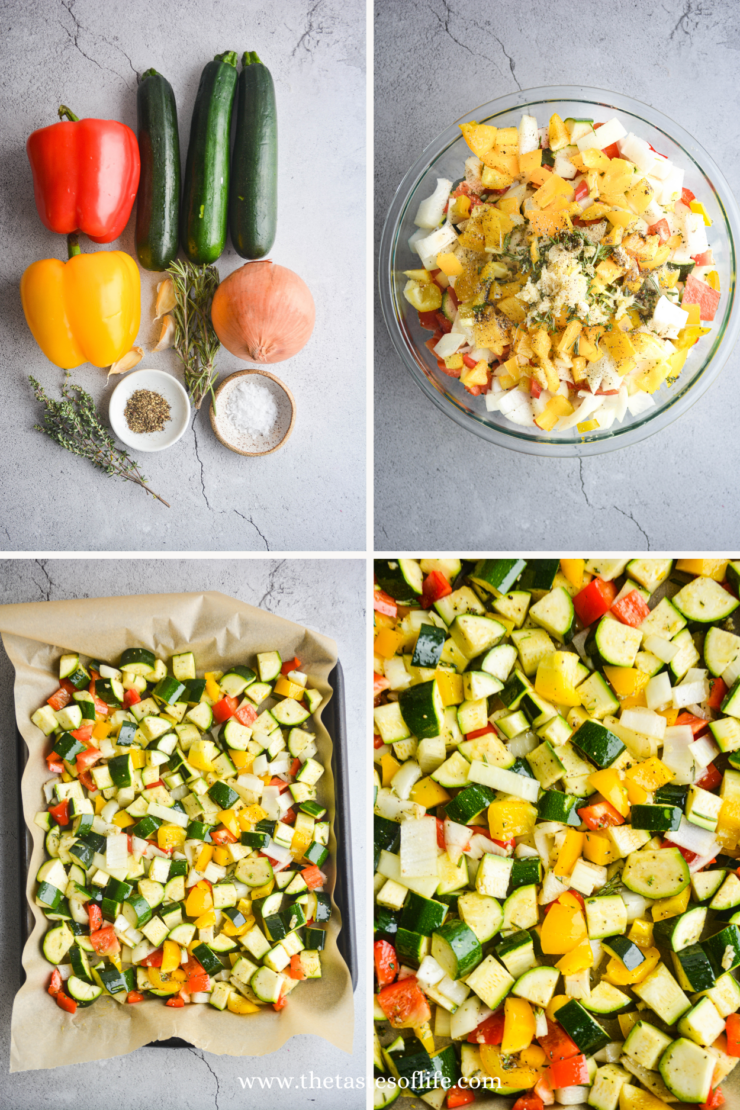
How to Save Time on Roasted Veggies
Here are some tips to help you save time when preparing sheet pan roasted vegetables:
- Prep in Advance: Take advantage of downtime during the week to wash, peel, and chop your vegetables ahead of time. Store them in an airtight container in the refrigerator until you’re ready to roast them. This way, you can simply season and roast them when you’re ready to cook, saving valuable prep time.
- Opt for Pre-Cut Vegetables: If you’re short on time or prefer the convenience, consider purchasing pre-cut vegetables from the grocery store. Many supermarkets offer a variety of pre-cut vegetables, such as bell peppers, squash, and broccoli, which can significantly cut down on prep time.
- Choose Quick-Cooking Vegetables: Certain vegetables cook faster than others, so opt for quick-cooking options to save time. Vegetables like cherry tomatoes, zucchini, and bell peppers roast relatively quickly compared to denser vegetables like potatoes or root vegetables.
- Invest in Time-Saving Tools: Consider investing in time-saving kitchen tools like a mandoline slicer or a food processor with a slicing attachment. These tools can help you quickly and evenly slice vegetables, reducing prep time significantly.
- Use High Heat: Roasting vegetables at a higher temperature can help them cook faster while still achieving caramelization and flavor. Just keep an eye on them to prevent burning, especially if you’re using smaller or more delicate vegetables.
- Batch Cooking: Roast a large batch of vegetables at once and store the leftovers in the refrigerator for easy reheating throughout the week.
Tips for Roasting Vegetables
- Preheat your oven: Make sure your oven is fully preheated before you put your veggies in. This helps ensure they cook evenly and develop that delicious caramelization. Use a High Temperature. The best temperature for roasting vegetables is 400 degrees F. If you have a convection oven, use the bake setting and reduce it to 375 degrees F.
- Use the right pan: A rimmed baking sheet or roasting pan works best for roasting vegetables. The raised edges prevent juices from spilling over and help the veggies cook more evenly.
- Spread veggies in a single layer: Don’t overcrowd the pan. Give your veggies some space so they can roast evenly. If the pan is too crowded, they’ll steam instead of roast.
- Skip Peeling. You can skip the peeling for vegetables like zucchini, potatoes, eggplant, yellow squash, and carrots (just make sure to wash them thoroughly first).
- Cut veggies evenly: Try to cut them into uniform pieces so they cook at the same rate. This helps prevent some pieces from burning while others are still undercooked.
- Drizzle with oil: Toss your veggies with olive oil or another cooking oil to help them brown and crisp up in the oven. Use enough oil to coat them evenly, but not so much that they’re swimming in it.
- Season generously: Don’t be shy with the seasoning! Salt and pepper are a must, but feel free to get creative with herbs, spices, and other flavorings. I always and only use fresh herbs for roasting vegetables. Tryst me on that one!
- Give them a shake: About halfway through the cooking time, give the pan a shake or use a spatula to flip the veggies. This helps ensure they cook evenly on all sides.
- Don’t peek too much: Avoid the temptation to open the oven door too often while your veggies cook. Every time you open the door, you let out heat and can disrupt the cooking process.
- Switch Upper and Lower Racks. If you are roasting on two pans, place them precisely in the middle of the oven; switch the bottom and top positions halfway through.
- Check for doneness: Towards the end of the cooking time, watch your veggies. They’re done when they’re tender and browned around the edges. You can also test them with a fork to make sure they’re cooked to your liking.

How to Season
- Classic Herbs and Spices:
- Italian Herb Blend: Mix dried oregano, basil, thyme, rosemary, and parsley with olive oil, salt, and pepper.
- Garlic and Herb: Combine minced garlic with fresh chopped herbs like thyme and rosemary, olive oil, salt, and pepper.
- Lemon Herb: Zest a lemon and mix the zest with chopped fresh parsley, dill, and chives, along with olive oil, salt, and pepper.
- Spicy Seasonings:
- Cajun Spice Blend: Mix paprika, garlic powder, onion powder, cayenne pepper, thyme, and oregano with olive oil, salt, and pepper.
- Mexican Spice Blend: Combine chili powder, cumin, smoked paprika, garlic powder, and oregano with olive oil, lime juice, salt, and pepper.
- Savory Sauces and Condiments:
- Balsamic Glaze or Pomegranate Molasses Glaze: After roasting, drizzle roasted vegetables with a balsamic glaze for a sweet and tangy flavor.
- Soy-Sesame Glaze: Toss roasted vegetables with soy sauce, sesame oil, minced garlic, and ginger for an Asian-inspired twist.
- Cheesy Goodness:
- Parmesan-Herb: Sprinkle freshly grated Parmesan cheese over roasted vegetables during the last few minutes of cooking for a savory and nutty flavor.
- Feta and Olive: Toss roasted vegetables with crumbled feta cheese, sliced olives, fresh oregano, and a drizzle of olive oil for a Mediterranean flair.
- Sweet and Spicy:
- Maple-Sriracha: Whisk together maple syrup, Sriracha sauce, and a splash of soy sauce, then toss with roasted vegetables for a sweet and spicy kick.
- Honey Mustard: Mix honey, Dijon mustard, and a dash of apple cider vinegar, then drizzle over roasted vegetables for a sweet and tangy glaze.
- Middle Eastern Flavors:
- Za’atar: Sprinkle roasted vegetables with Za’atar spice blend (a mixture of dried thyme, sumac, sesame seeds, and salt) for a fragrant and aromatic seasoning.
- Harissa: Toss roasted vegetables with harissa paste (a spicy North African chili paste) mixed with olive oil, lemon juice, and garlic for a fiery and flavorful kick.
Ingredients for Sheet Pan Roasted Veggies
- Zucchini: Zucchini is a versatile summer squash with a mild flavor and tender texture.
- Garlic cloves: When roasted, garlic cloves become soft and creamy, with a mellow, sweet flavor. They add depth and complexity to roasted vegetable dishes, infusing them with a savory richness.
- Onion: Onions add a pungent, slightly sweet flavor. When roasted, they become caramelized and tender, with a rich, sweet flavor.
- Yellow squash: It has a tender texture and mild, slightly sweet flavor. When roasted, yellow squash develops a golden exterior and tender interior, adding color and sweetness to the dish.
- Bell peppers (assorted colors): When roasted, bell peppers become soft and sweet, with a caramelized exterior and smoky flavor. Assorted colors add visual appeal to roasted vegetable dishes, creating a vibrant and colorful presentation.
- Fresh herbs (such as rosemary, thyme, and oregano): Fresh herbs like rosemary, thyme, and oregano add aromatic flavor and fragrance to roasted vegetables. Rosemary has a piney, resinous flavor, thyme offers earthy and floral notes, and oregano lends a robust, slightly bitter flavor. When roasted with vegetables, fresh herbs infuse them with layers of aromatic complexity, enhancing their overall taste and aroma.
- Olive oil: Olive oil is a staple ingredient in Mediterranean cuisine, prized for its rich flavor and health benefits. It adds richness and moisture to roasted vegetables, helping them brown and caramelize in the oven.
Salt and Black pepper: Salt adds depth and sweetness, while black pepper adds subtle heat and complexity.
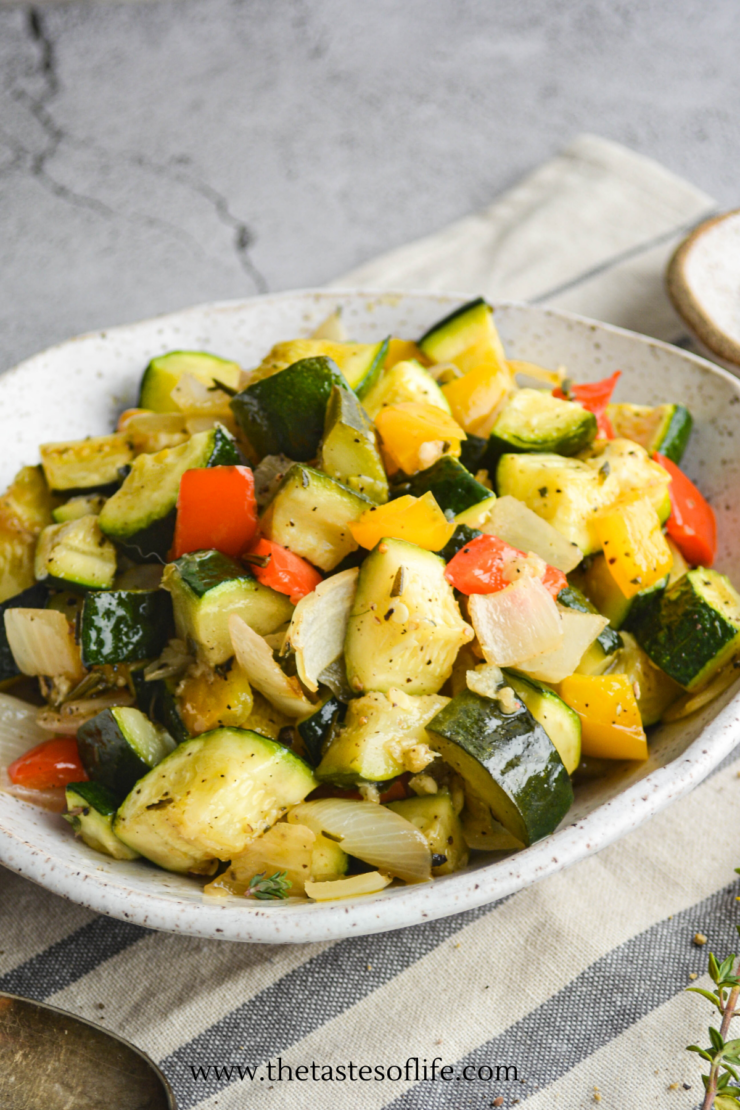
Instructions For This Sheet Pan Roasted Veggies
- Preheat your oven to 425°F (220°C) and line a baking sheet with parchment paper or aluminum foil.
- Wash and chop the vegetables into uniform pieces. Cut the zucchini and yellow squash into rounds or half-moons, slice the onions into wedges, and remove the seeds and membranes from the bell peppers before slicing them into strips or chunks.
- Peel and mince the garlic cloves.
- Place all the chopped vegetables and minced garlic in a large mixing bowl. Drizzle with olive oil and toss to coat evenly.
- Chop the fresh herbs finely and add them to the bowl with the vegetables. Season generously with salt and black pepper, tossing again to distribute the herbs and seasoning evenly.
- Spread the seasoned vegetables in a single layer on the prepared baking sheet, ensuring they are not overcrowded.
- Roast in the preheated oven for 30-35 minutes, or until the vegetables are tender and caramelized, tossing halfway through for even cooking.
What to Serve With
- Grilled or Roasted Meat: Pairing roasted vegetables with grilled or roasted meat is a classic combination.
- Baked Salmon: Roasted vegetables are a nutritious and flavorful side dish to serve alongside baked salmon.
- Pasta: Tossing roasted vegetables with cooked pasta and a drizzle of olive oil makes for a simple yet delicious meal. For extra flavor, add grated Parmesan cheese and fresh herbs.
- Quinoa or Couscous: For a hearty and nutritious vegetarian meal, serve roasted vegetables over a bed of cooked quinoa or couscous.
- Grain Bowls: Create customizable grain bowls with a base of cooked grains (such as rice, barley, or farro) topped with roasted vegetables, protein (such as grilled tofu or chickpeas), and your favorite sauce or dressing.
- Wraps or Sandwiches: Roasted vegetables can be used as a filling for wraps or sandwiches. Pair them with hummus, avocado, or your favorite spread for a satisfying vegetarian lunch or dinner option.
- Salads: Roasted vegetables add extra flavor and texture to salads. They can be served warm or at room temperature and pair well with leafy greens, nuts, seeds, and a tangy vinaigrette.
- Soup or Stew: Roasted vegetables add extra depth of flavor and texture to soups or stews. They can be pureed into the soup or served chunky.
How to Store it?
After roasting vegetables, allow sheet pan roasted vegetables to cool to room temperature before transferring them to an airtight container or resealable bag. Store them in the refrigerator for up to 3-4 days. When reheating, you can warm them in the oven, microwave, or skillet until heated.
Equipment
- Baking Sheet: A large baking sheet or roasting pan with raised edges is essential for roasting your vegetables evenly without any spillage.
- Parchment Paper
- Chef Knife
- Cutting Board
- Mixing Bowl
- Spatula
- Oven Mitts
Enjoy these sheet pan roasted vegetables for any occasion and let me know how you like it!
More Side Dish Recipes
Authentic Mexican Black Beans Recipe (Frijoles Negros)
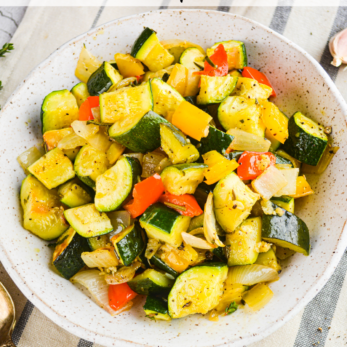
Sheet Pan Roasted Vegetables Recipe
Ingredients
- 3 Zucchini Medium
- 3 Yellow Squash Medium
- 1 Onion Chopped
- 1 Red bell pepper Chopped
- 1 Yellow pepper Chopped
- 1 Green Pepper Chopped
- 1/4 Olive oil
- 5 cloves Garlic Minced
- 1 tbsp Rosemary Fresh, chopped
- 1 tbsp Thyme Fresh, chopped
- 1 tsp Salt
- Black pepper to taste
Instructions
- Preheat your oven to 400°F (200°C) and line a baking sheet with parchment paper. Wash and chop the vegetables into uniform pieces. Cut the zucchini and yellow squash into rounds or half-moons, slice the onions into wedges, and remove the seeds and membranes from the bell peppers before slicing them into strips or chunks.Peel and mince the garlic cloves.Place all the chopped vegetables and minced garlic in a large mixing bowl. Drizzle with olive oil and toss to coat evenly.Chop the fresh herbs finely and add them to the bowl with the vegetables. Season generously with salt and black pepper, tossing again to distribute the herbs and seasoning evenly.Spread the seasoned vegetables in a single layer on the prepared baking sheet, ensuring they are not overcrowded.Roast in the preheated oven for 30-35 minutes, or until the vegetables are tender and caramelized, tossing halfway through for even cooking.


